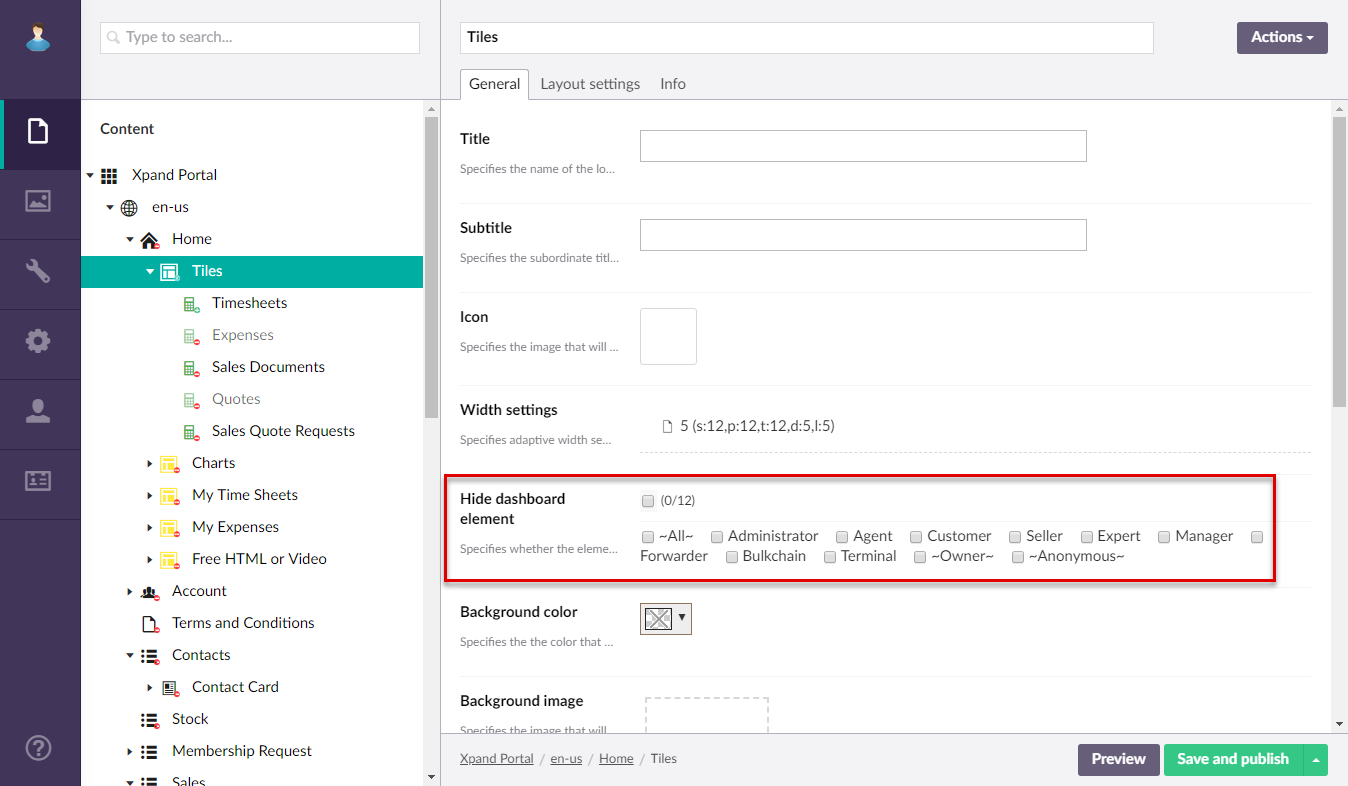Configure member group permissions for layout blocks and their elements
Layout blocks are page elements that are used to group other page elements on detail pages or on the home page. Layout blocks for the home and detail pages have different sets of elements that they can include.
Availability of certain features on layout blocks or layout page elements is configured through the member group permissions. Thus, these page features are available only for portal members that were assigned to a portal member group for which these features are allowed.
Member group permissions for layout blocks
When you create or edit a layout block (a page with the ![]() icon for home layout block or with the
icon for home layout block or with the ![]() icon for the detail page layout block or with the
icon for the detail page layout block or with the ![]() icon for the detail page layout block), you can set up the following member group permissions:
icon for the detail page layout block), you can set up the following member group permissions:
- Hide element - This setting hides the layout block from the parent page. It can be configured per member group. In the layout block page settings, on the General tab, in the Hide element setting, select one or several member groups, for which this layout block will be hidden. Alternatively, you can select the ~All~ check box to hide it for all member groups (without the necessity to select every member group's check box) or select the Select all check box to have all member groups selected at once.
 The space of the hidden layout block will be occupied by other page parts if possible.
The space of the hidden layout block will be occupied by other page parts if possible.
Whenever you make changes in page settings, ensure that you select Save and publish to save the changes and publish them on the front end. Optionally, if you were editing the page, you can select Save and preview to preview how the page will look like on the front end.
Member group permissions for block elements
When you create or edit a layout block element, you can set up the following member group permissions:
- Hide element - This setting hides the layout block element from the home page. It can be configured per member group. In the cue tile settings, on the General tab, in the Hide element setting, select one or several member groups, for which this cue tile will be hidden. Alternatively, you can select the ~All~ check box to hide it for all member groups (without the necessity to select every member group's check box) or select the Hide element check box to have all member groups selected at once.

The space of the hidden layout block element will be occupied by other page parts if possible.
Whenever you make changes in page settings, ensure that you select Save and publish to save the changes and publish them on the front end. Optionally, if you were editing the page, you can select Save and preview to preview how the page will look like on the front end.